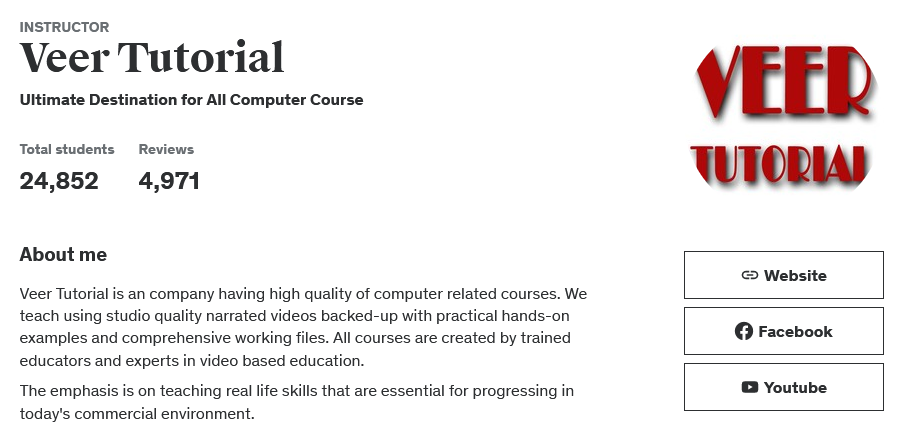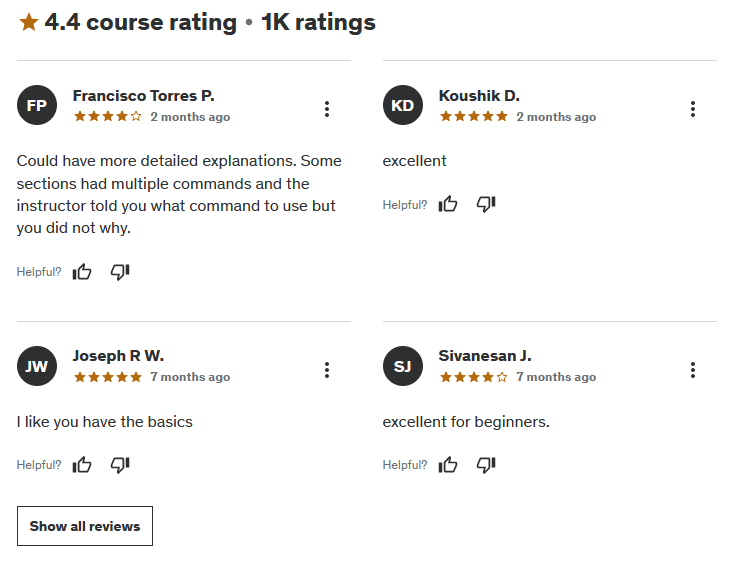Welcome to my latest blog post where I’ll be sharing my experience with the “Pro Engineer Creo Fundamental 3D design course” available on Udemy. Whether you’re a mechanical engineer, a design enthusiast, or someone just curious about CAD software, you’ve probably considered sharpening your skills with a comprehensive course. Let’s dive into the details of this course and see if it lives up to the expectations.
First off, the course is brought to us by Veer Tutorial, a name that’s been making waves in the world of online education, especially when it comes to computer courses. With a solid instructor rating of 4.3 and a wealth of positive reviews, my expectations were high from the get-go. The course promises to take you from a complete novice to a confident user of Creo Parametric, a powerful tool in the 3D CAD/CAM/CAE realm developed by PTC Corporation.
Instructor Reputation
When delving into the realm of online learning, the instructor’s reputation and teaching style are as crucial as the course content itself. In the case of the “Pro Engineer Creo Fundamental 3D design course” on Udemy, the driving force behind the educational journey is Veer Tutorial. With an instructor rating of 4.3, backed by 4,971 reviews, and an impressive roster of 24,852 students enrolled across 21 courses, Veer Tutorial stands out as a beacon of knowledge and expertise in the computer course domain.

The entity behind Veer Tutorial is not just a singular voice but a team of experts and trained educators dedicated to spreading knowledge in the computer sciences field. They’ve garnered respect and credibility by focusing on studio-quality narrated videos complemented by practical, hands-on examples. This blend of high-quality presentation and interactive learning materials is aimed at equipping students with real-life skills essential in today’s fast-evolving commercial environment.
Digging deeper into the instructor’s reputation, it becomes evident that Veer Tutorial’s approach to teaching is built on a foundation of accessibility and comprehensiveness. Their courses are designed not just to impart knowledge but to inspire innovation and creativity among students. This ethos is particularly important when teaching complex software like Creo Parametric, where the gap between novice and proficient can seem daunting.
The feedback from students offers a glimpse into the teaching effectiveness of Veer Tutorial. While most reviews tilt towards the positive, highlighting the clarity of instruction and the depth of knowledge shared, there are mentions of areas for improvement. Some students, like Francisco Torres P., have pointed out that while the course covers a vast array of commands and tools, the why behind using certain commands could be elucidated further. This constructive criticism is valuable, not just for potential students to set their expectations, but also for the instructor to refine and enhance the learning experience.
In summary, the reputation of Veer Tutorial as the instructor for this Creo Parametric course is solid. The combination of expert knowledge, a well-thought-out teaching strategy, and responsive student support underlines their commitment to quality education. For learners embarking on this course, the assurance comes from knowing they’re guided by experienced hands dedicated to not just teaching but empowering students with the skills to innovate and excel.
Course Structure
The “Pro Engineer Creo Fundamental 3D design course” boasts a meticulously designed structure that aims to systematically elevate a learner from a beginner to an adept user of Creo Parametric. The course is segmented into five detailed modules, each focusing on a critical aspect of 3D design and modeling. This thoughtful structuring is a testament to the instructor’s understanding of the learning curve associated with mastering a sophisticated tool like Creo Parametric and their commitment to providing a comprehensive educational journey.

Module 1: 2D Sketch Modelling
This foundational module is where the journey begins, introducing learners to the basic building blocks of design. The focus is on mastering 2D sketch modeling tools such as lines, circles, rectangles, and more. This section sets the stage for all subsequent design work, emphasizing the importance of precision and efficiency in creating sketches.
Module 2: 3D Modelling
Building on the 2D sketches, this module dives into the transformation of flat drawings into three-dimensional models. Learners are introduced to commands like extrude, revolve, and sweep, which are essential for bringing sketches to life. This section is crucial for understanding the core functionalities of Creo Parametric in creating complex models.
Module 3: Advanced Surface Modeling
As learners become more comfortable with basic 3D modeling, this module introduces more sophisticated surface modeling techniques. These skills are essential for creating complex and intricate shapes that are often required in advanced design projects. The module covers a range of tools and commands, providing learners with the ability to tackle more challenging designs.
Module 4: Drafting and Drawing
This module shifts focus towards the documentation and presentation aspect of design. Learners are taught how to create detailed drawings, projections, and drafts of their models. This section is vital for anyone looking to use Creo Parametric in a professional setting, where clear and accurate documentation is as important as the design itself.
Module 5: Assembly
The final module brings all the learned concepts together, teaching learners how to assemble individual parts and components into a cohesive whole. This section covers the application of constraints and explores the dynamics of moving parts within an assembly. It’s a critical phase where learners get to see the practical application of their designs in simulated real-world scenarios.
Across all these modules, the course offers over 110 video lectures and more than 9 hours of content, making it a deeply enriching experience. Additionally, it incorporates practical exercises and provides access to all files used in the course for practice, ensuring that learners not only understand the theoretical aspects of the software but also gain hands-on experience. The structured approach to learning, combined with ample practice opportunities and comprehensive content coverage, makes the course’s structure one of its most compelling features.
Content Quality
The content quality of the “Pro Engineer Creo Fundamental 3D design course” on Udemy is a pivotal element that dictates the overall learning experience. This course, designed to cater to both beginners and intermediate learners interested in 3D design and modeling, provides a robust foundation in Creo Parametric through a curriculum that is both comprehensive and detailed. The instructional materials, primarily video lectures, are crafted to ensure clarity, engagement, and a deep understanding of the software’s capabilities.

At the heart of the course’s content quality is its emphasis on practical, hands-on learning. Each module is saturated with detailed tutorials that guide learners through the intricacies of Creo Parametric, from basic 2D sketches to complex 3D models and assemblies. The video lectures, known for their studio-quality narration, are complemented by practical examples and exercises that are crucial for cementing the knowledge gained. This blend of visual and practical learning aids significantly enhances content retention and application skills.
Moreover, the course boasts an impressive range of topics covered, ensuring that learners gain a holistic understanding of Creo Parametric. The tutorials meticulously explain the functionality and application of various commands and tools within the software, supported by more than 10 practice models. These models serve as an excellent resource for learners to apply what they’ve learned in a controlled environment, further enriching the learning experience.
Despite its many strengths, the course’s content quality is not without critique. Some learners, as highlighted in reviews, have pointed out areas where the course could improve. For instance, while the course excels at demonstrating how to use various commands and tools, there’s a perceived gap in explaining the underlying principles or the ‘why’ behind certain procedures. This feedback suggests that a deeper dive into the rationale and theory could provide a more rounded learning experience, enabling students to not only follow along but also to innovate and adapt their skills to new challenges.
Overall Course Rating – 8/10
Taking all factors into consideration, I would rate the “Pro Engineer Creo Fundamental 3D design course” an 8 out of 10. This rating reflects the course’s strong foundation in providing a comprehensive learning path from basic to advanced Creo Parametric functionalities, its high-quality content delivery, and its structured approach to education. The course’s strengths are evident in its detailed video lectures, practical hands-on exercises, and the breadth of topics covered, which collectively offer a solid grounding in 3D modeling and design.

However, the course rating also acknowledges the room for improvement in areas such as the depth of theoretical explanations and the pacing of certain modules. Feedback from students suggests that enriching the content with more detailed explanations of the ‘why’ behind certain commands and possibly slowing down the instruction in more complex sections could enhance the learning experience. Addressing these areas could elevate the course to an even higher standard, making it not just a tool for learning Creo Parametric but also a comprehensive guide to understanding the principles of 3D design.
In summary, the “Pro Engineer Creo Fundamental 3D design course” stands out as a valuable resource for anyone looking to delve into the world of computer-aided design with Creo Parametric. With its extensive content, practical learning approach, and overall structure, the course offers a solid foundation for beginners and a useful refresher for intermediate learners. The areas for improvement, while notable, do not detract significantly from the course’s value, making it a commendable choice for aspiring designers and engineers looking to enhance their skills and knowledge in 3D modeling.



